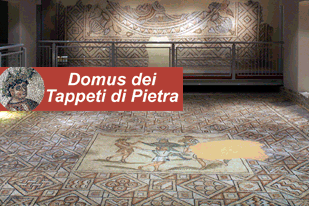San Francesco, Ravenna at Dante's era






San Francesco in Ravenna. Hotels near San Francesco church Ravenna.
Photo: 1)the basilica of San Francesco on the homonym square, 2)a fresco fragment of the Crucifixion by Pietro da Rimini
3)a fresco fragment in the Polenta Chapel, 4)the burial stone of Ostasio da Polenta, 5)inside the Basilica, 6)S. Francesco with snow (2012)
Ravenna during the era of Dante had over two-hundred churches: this large number being the result of the consolidation of the assets of the diocesan curia as well as the strengthening of its ecclesiastical and secular powers, ratified by the papal and imperial authorities, from the second half of the 10TH century.
The importance of the places of worship was also reflected in the fact that many of the thirteen "guaite", a word of Germanic origin that indicated the districts into which the city was divided, were named after the main church that was located there.
The Basilica of San Pietro Maggiore, or of the Apostles, dating back to the 5th century, gave its name to this guaita. It was dedicated to Saint Francesco in 1261, when the Bishop donated it to the Minor conventual orders. It was a favourite of the Polentani.
Many of the family members were in fact buried here, even though today only the memory of Ostasio remains, with the burial stone dating back to 1398, composed of elegant red and white marble. It was here that the the funerals of Dante was held in 1321.
The nobles of the Da Polenta, family, thanks to close family ties with the Malatesta, contributed to the artistic renovation of 14th century Ravenna, linked to the highly acclaimed cultural circuit of the Rimini painting school, of which varied. Although fragemented remains still exist in this church.
Amongst the most famous being the tre Marie dolenti (the three sorrowing Marys), to be found in the chapel which is today named after Massimiliano Kolbe, and forming part of a Crucifixion painted by Pietro da Rimini, one of the forerunners of the Rimini painting school, active in the first decades of the 14th century in Pomposa, Bagnacavallo, Padua and Tolentino.
The Rimini masters are also reputed to have been responsible for the biblical stories on the Polenta chapel, delimited by a high ogive, along the left nave; as well as the delicate images of praying female figures, in a niche of the chapel of the Virgin, on the opposite nave.
Prof. Gianni Morelli
The pleasure of fine accommodation in the centre of Ravenna: we recommend the Fabbri hotels for a pleasant stay as follows:
The Centrale Byron hotel, 3-star, in the centre of Ravenna, near to the San Francesco church ;
The Bisanzio Hotel, 4-star hotel in the centre of Ravenna, close to the San Francesco church ;
Once you have reached the hotel and parked your car, forget it and walk everywhere, because everything is within walking distance.
The railway station is near our hotels and within walking distance of them.
.





